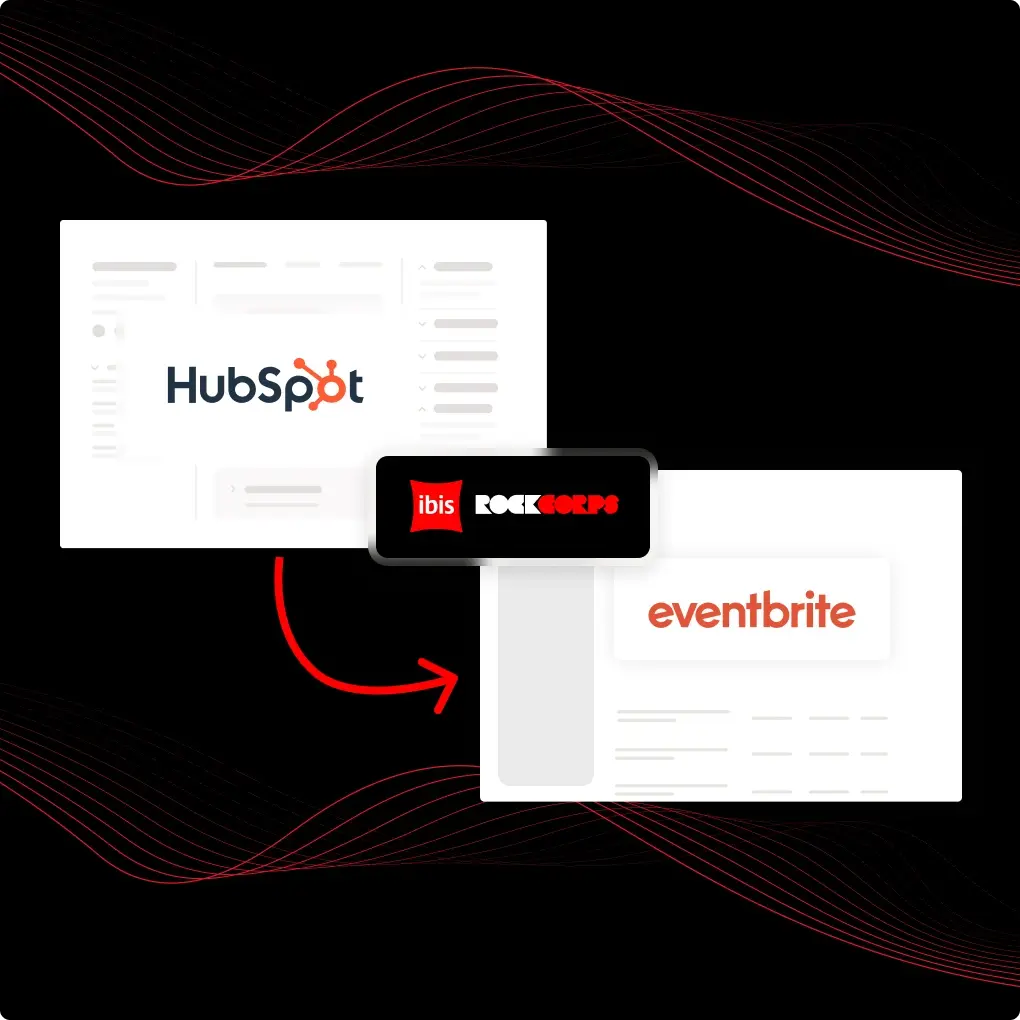Web Design
Develop your target audience
Solutions
Web Design
Develop your target audience
Marketing Acquisition
Convert more qualified contacts
CRM integration
Generate more business
Précédent
Web Design
Website audit
Identify areas for improvement
Conversion website
Convert your audience
HubSpot CMS theme
Redesign your site quickly
Front-End development
Create a powerful website
Website maintenance
Ensure regular performance
API & Synchronisation
Optimize your functionalities
Précédent
Marketing Acquisition
Inbound Marketing Campaign
Attract opportunities
Copywriting strategies
Captivate your prospects
Marketing Automation
Industrialize your tasks
Email marketing
Get the right message across
SEO strategy
Be #1 on Google
Marketing dashboard
Make the right decisions
Google Ads
Capture your audience
Social media strategy
Control your e-reputation
Précédent
CRM integration
HubSpot CRM integration
Centralize your data
Sales dashboard
Make the right decisions
HubSpot CRM migration
Migrate your data
Sales Automation
Eliminate manual actions
Data segmentation
Target your sales sequences
Aircall telephony installation
Maintain your customer relations
Customer service
Retain your existing customers
CRM maintenance
Keep your CRM data up to date
Agency
Agency
We support business growth through the acquisition of new customers.
HubSpot
HubSpot Expertise
Discover our HubSpot services
HubSpot CRM Platform
Discover HubSpot hubs
Précédent
HubSpot Expertise
Fermer
Que recherchez-vous ?
Suggestions populaires
Inbound Marketing
CRM
HubSpot
Healthcare


In the healthcare sector, where innovation and rigor are essential, customer relationship management plays a key role in maximizing team efficiency and guaranteeing customer satisfaction. This company, specialized in the manufacture of pharmaceutical preparations and the sale of analysis equipment, employs between 250 and 499 people.
It operates internationally, with subsidiaries on several continents. Initially, the company integrated HubSpot autonomously, without the support of a partner, which led to a partially optimized use of the solution. Aware of the limitations of this initial configuration, it called on Make the Grade to intervene as an expert capable of restructuring and optimizing the existing system thanks to a complete CRM audit.
Its aim is to optimize the use of HubSpot by its talents, standardize practices across subsidiaries and exploit all available functionalities to support its growth.
Although the company had a solid infrastructure in place with HubSpot, it identified several issues limiting its operational and strategic efficiency. The challenge was to carry out a complete CRM audit. The company faced challenges common to organizations undergoing international expansion, bringing with it its share of opportunities and transformations.

Each subsidiary of the company uses HubSpot in its own way, with no harmonization of processes or alignment of practices. This fragmented management prevents the company from obtaining a global, consistent view of its performance. Local teams develop their own workflows, lists and properties, resulting in data silos and complicating cross-country collaboration. The absence of a centralized CRM strategy also limits the ability of marketing and sales teams to work in a coordinated way.
The HubSpot portal reflects this diversity of use, with a non-centralized and unintuitive structure. There is a lot of duplication, whether in properties, lists or workflows, which limits the reliability of data exploitation. What's more, data is not consistently segmented by team or country, complicating processing and reducing operational efficiency.
In terms of role management, although permission sets are in place prior to intervention, HubSpot presets for representatives and management are not configured. This results in a haphazard management of access and responsibilities within CRM. This lack of configuration slows down teams, increases the risk of errors, and makes campaign and performance tracking more complex. We have therefore included among its recommendations the implementation of suitable presets to structure and clarify role management in HubSpot.
The company has a Marketing Enterprise subscription, but doesn't use all the features it offers. For example, campaign tools are not used to track marketing performance, and dashboards are underdeveloped, limiting visibility of results. This lack of strategic use of available tools prevents the company from maximizing its ROI and making strategic decisions based on reliable data.
These issues present both challenges and opportunities for optimization, to align the company's tools and practices with its strategic ambitions.
To meet the challenges identified, we adopt a methodical, customized approach aimed at transforming HubSpot CRM into a high-performance, structured tool tailored to the company's specific needs. The intervention takes place in several complementary stages, each playing a key role.

The first step is to carry out an audit to understand the issues and friction points encountered by Sebia teams in their current marketing processes and in their use of HubSpot CRM. This diagnosis enables us to precisely identify existing strengths and areas for improvement in order to optimize the tool and practices.
Team interviews: We organize in-depth interviews with the company's marketing staff in France, Germany and the US.
These exchanges enable us to better understand current practices, expectations and challenges encountered on a daily basis. This step is essential to ensure that the proposed solutions meet the real needs of the teams.
Technical analysis of the HubSpot portal: The aim of the HubSpot portal audit is to analyze how it is set up and used by the various teams identified and interviewed beforehand. This analysis covers all key functionalities: contacts, companies, automations, lists, e-mail marketing, dashboards, and much more. In particular, we found numerous duplicates, as well as insufficient organization of items, which were not filed in structured folders.
In addition, poor rights and access management was identified: all teams had access to all data, without appropriate segmentation. For example, teams in Germany used a list from another country to send a marketing e-mail, which led to confusion. These observations highlight the need for a reorganization to structure the elements and limit the errors associated with non-centralized management.
Surprise report and scoring grid: At the end of this phase, we draw up a report detailing the key observations. This document highlights the CRM's strengths, critical issues and priorities for action. The scoring grid that accompanies this report also includes a classification system to assess the effort required, the complexity of the actions to be taken, and the current status of each element. This system makes it possible to clearly define priorities and the people responsible for each action, thus ensuring effective and structured implementation of the recommendations.
Once the audit has been completed, we propose a structured, detailed action plan to best meet the company's challenges.
We recommend adding the Service Pro module to strengthen customer relationship management and enhance the user experience. This step includes :
Throughout the project, we adopt a collaborative approach, actively involving company teams in the transformation process. This collaboration is based on the organization of regular copils, frequent exchanges around the astonishment report, as well as a follow-up of actions implemented by the customer after delivery of the report. By combining technical expertise and listening to needs, we transform identified challenges into concrete opportunities for improvement.
Two major HubSpot modules are at the heart of this CRM audit:
Following this CRM audit, the company has new objectives in view, to optimize its long-term growth.
In conclusion, the CRM audit we carried out enabled the pharmaceutical company to take a significant step towards optimizing its customer relationship management.
By standardizing the use of HubSpot across its subsidiaries, reorganizing its CRM portal and making full use of the platform's advanced functionalities, the company is strengthening its internal collaboration and improving the efficiency of its marketing processes. The recommendation to integrate the Service Pro Hub also prepares the company to offer superior customer service, consolidating its position in the global market. This collaboration illustrates the importance of a personalized, methodical approach to meeting the specific challenges of companies seeking growth and operational optimization.
A look back at the project
"This HubSpot CRM audit identified areas for optimisation to maximise the use of the platform's functionalities. Interviews with the marketing teams and analysis of the settings highlighted key improvements, boosting efficiency, marketing process automation and adoption by the teams."... Plus

Clara Delabrosse
CRM & RevOps Lead Consultant chez Make the Grade
The services provided
Team Design
Team Growth Marketing

Your needs
Do you have a project?
We test, we iterate and we're constantly on the lookout. There's no magic formula for exceeding your B2B growth targets, just method, challenge and know-how.
Contact one of our expertsfonctionnalités HubSpot auditées, sur le Marketing Entreprise et le Service Pro.
interviews internes focus sur les métiers marketing, ops et management.
recommandations personnalisées, documentées et priorisées.


